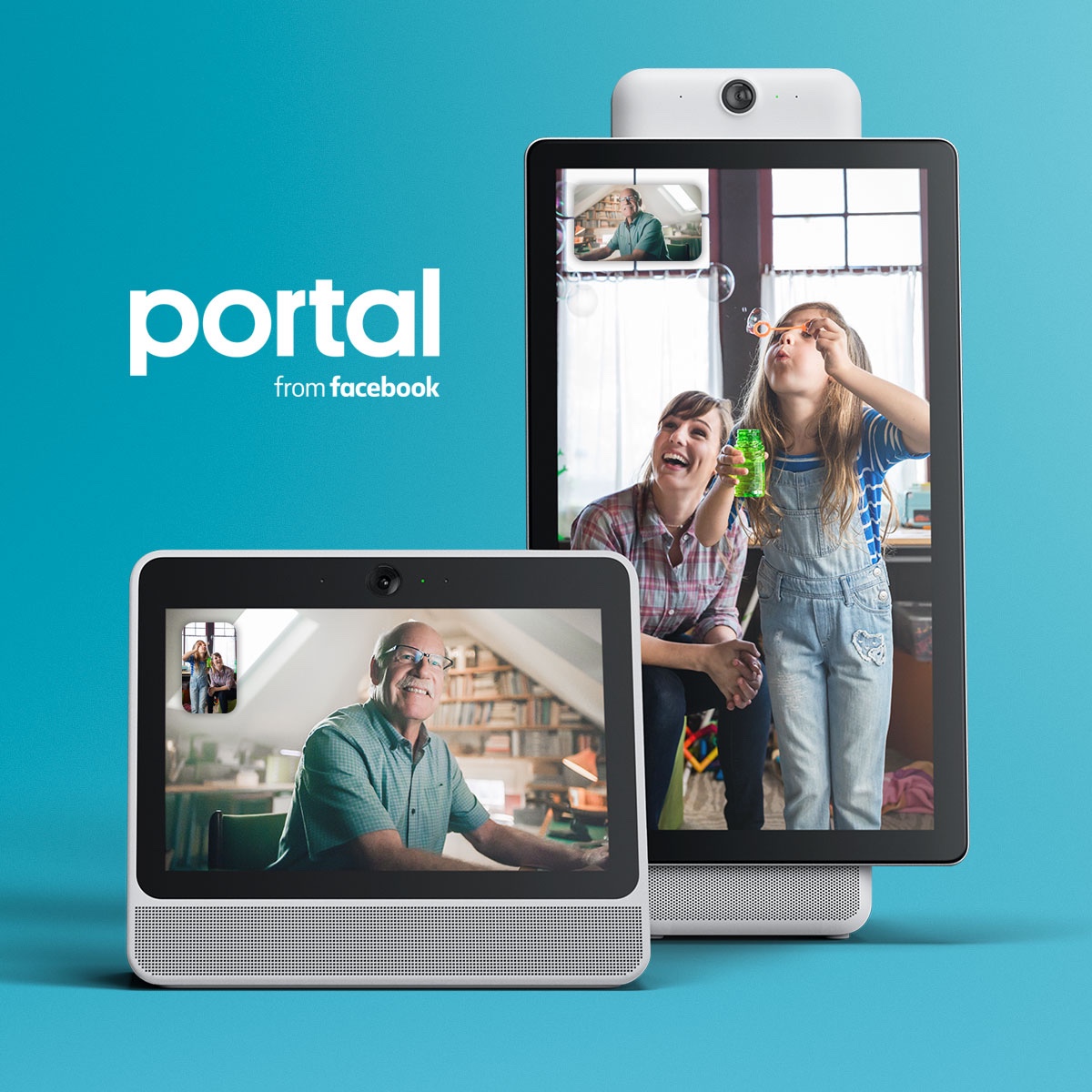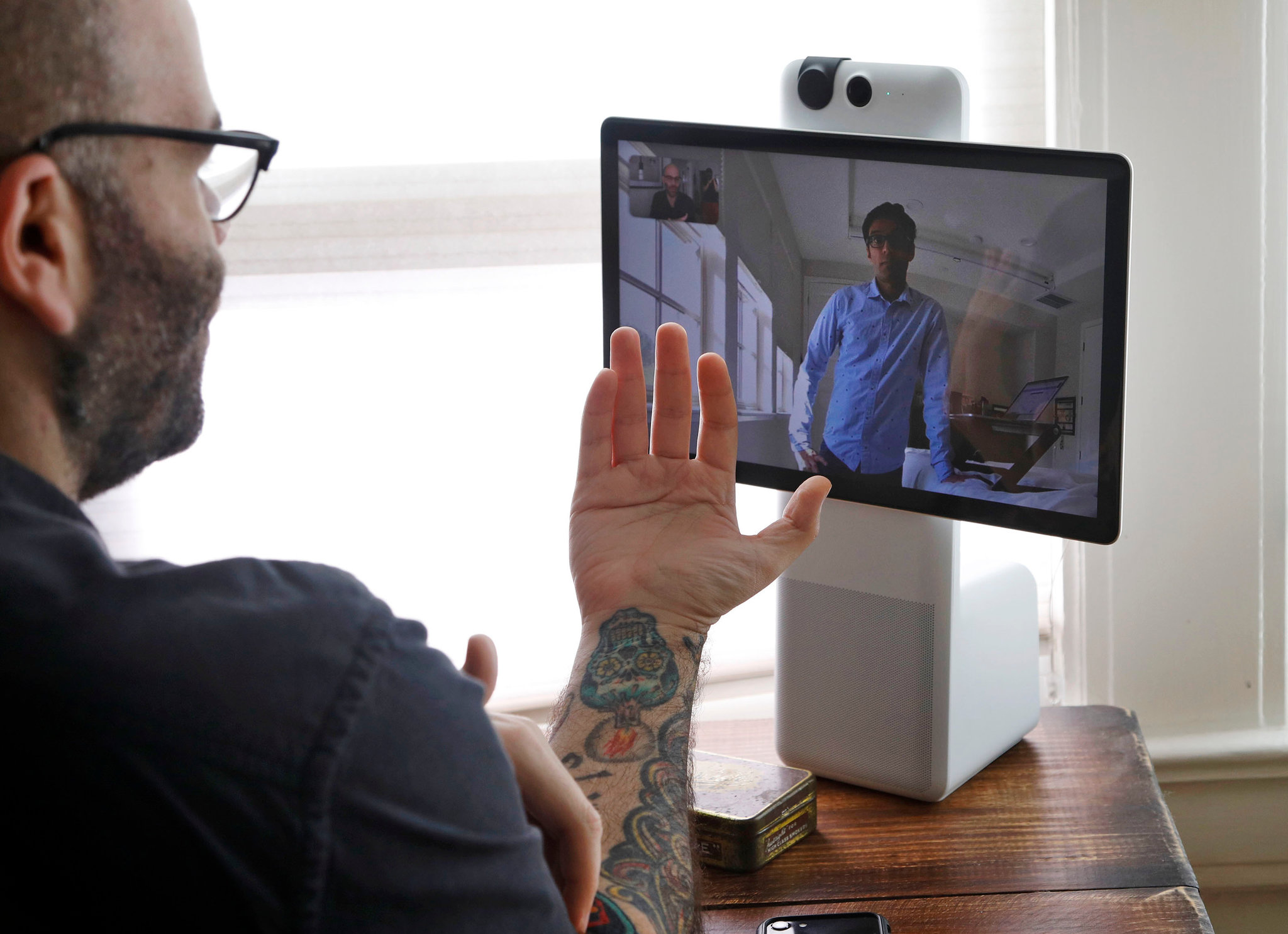

Chief Technology Officer
26 October 2020 (Paris, France) – With all the issues facing us today – a global pandemic, election interference, getting our work done, etc.), we have better things to do than fuss over how we look during conference calls. For most of us it takes a remarkable amount of effort to look alive and healthy for a 30-minute/60-minute/endless e-face meeting/event. There are so many things to figure out. Is the lighting right? Is the camera positioned properly? Can they hear me OK? Your computer is a machine with vast capabilities, but it probably doesn’t have the best camera, speaker, or microphone. For months now, we’ve all been staring at each other in our makeshift spare bedrooms or closets or garages, filming our own separate versions of The Blair Witch Project. Even the most tech-savvy of my colleagues loom like giant, hairy shadows in our Zooms.
As I noted in an earlier post, there is a booming industry of gadgets for turning a computer into a home video studio: webcams, laptop stands, speakers, lights.
And as my partner, Greg Bufithis, noted in his short history of video calls, we are about to make an exponential leap in this technology. His video team is working with the beta of an iOS that will improve the lighting on the person you are calling. Many times on Zoom chats or video interviews the host/interviewer always has better lighting because she/he has better equipment. Apple wants to compensate for that through AR to “correct” everybody’s lighting, positioning, stare, etc. Tweaks like these, minor as they might be, will help make video calls even more immersive and make it more like you’re having an everyday chat with a person.
But for the moment I suggest a solution that will be cheaper, easier, and probably work better: Just Zoom on a Facebook Portal.
Yes, yes, I know: Facebook’s long history of queasy-making decisions
Yes, I know. When I first mentioned the Portal two years ago (it came out in late 2017/early 2018) I was deeply conflicted given Facebook’s long history of queasy-making decisions. I couldn’t in good conscience express unqualified support of a company that has done pretty much everything it can to make its users deeply distrustful, not when I myself do not use Facebook.
However, it turns out that I will now happily throw all my principles out the window since Facebook has alleviated the torture of all these video calls/event we are on. Last month Facebook announced the Portal was offering support for videoconferencing services: mainly Zoom, but it added WebEx, BlueJeans, and GoToMeeting and will add three more videoconferencing services by this January.
Previously, video chat on the Portal has been limited to Facebook-owned services: Messenger, WhatsApp, and Workplace (Facebook’s business-oriented social platform). And now, users do not need a Facebook account to use it.
I bought the 10-inch Portal for each of our team members. There’s also a mini, large, and TV version and you can read about them by clicking here). Our units are about the size of a digital picture frame and nestle naturally on the left side of our laptops on a stand. One pain-in-the-ass bit: to manually tap in the meeting code on the Portal’s touchscreen; if I was on my computer, I could simply click a link. But now, I am a convert.
Live From the Studio!!
My Zoom/videoconference participants noticed the difference immediately. Major improvement from two years ago: the Portal’s standout feature is its ability to recognize humans in the shot and move the camera around to keep faces clearly visible. On the other end of the line, the effect is eye-catching. It’s hard to not notice your one coworker in a corner of the gallery view, chugging coffee, knees tucked up in the kitchen chair as the camera slowly pans and zooms to keep her perfectly in frame while everyone else’s head and shoulders remain totally still. Nick Abington from CNET noted:
Is this why videoconferencing is so tiring? Unless you’re an Instagram influencer, you’re probably not accustomed to looking at yourself constantly, or having to stay put in the same position for hours at a time. Until I didn’t have to do it anymore, I didn’t realize how hard it is to keep yourself properly lit and positioned in the frame. It’s exhausting.
Also, the Portal fact sheet noted the team worked with several Hollywood cinematographers to optimize the auto-pan and zoom features of the device. It shows. Greg noted Apple is doing the same with the new iOS in development.
For me, talking or attending meetings just feels so much more natural when I don’t have to worry about my lighting, being at the correct angle, or even maintaining eye contact. I can do something as ordinary as sit comfortably in my chair, knowing that the Portal will find the correct framing for me.
And … no more headphones. No more adjusting the volume on your computer’s irritating, tinny speaker system, or plugging in your enormous Yeti microphone. The Portal has a big, round, hand-sized speaker on the back that sounds great, and a four-microphone array that will pick you up even if you’ve turned your head away.
What? MORE equipment on my desk!?
OK, a device dedicated solely to video calling is a little suspect. Our desks are already littered with camera-fied phones, tablets and computers. Do you really need a specific device just to call people? A device that has to be plugged in? The thing is I don’t think any of us could have anticipated that many, if not all, of our social interactions would soon take place online. Months deep into the Covid-19 pandemic, owning a dedicated videophone makes as much sense as owning a dedicated refrigerator or a dedicated stove. Single-use devices make a lot of sense if they’re good at what they do, and if you use them a lot.
I also used to think the Portal was expensive. We buy our tech equipment from the U.S. because we have corporate accounts with Amazon and Apple plus special shipping rates. Our units were $179 each (and look to be about €199 from EU-based vendors; there is a Portal Mini for $149). But I figure: how much have you spent, or are considering spending, on laptop stands, ring lights, mics, noise-canceling headphones, or other gadgets to make videoconferencing work better? And that probably won’t work as well as a Portal, anyway?
Privacy issues?
Facebook has made moves to change its tune on privacy, but the suspicion directed at the company will never abate. Zoom may have had privacy issues of its own, but it makes sense that Facebook would try to make the Portal more appealing by inviting a familiar and popular app into the fold. In fact, the CNET cyber security analysts noted the Portal actually makes those other videostreaming services more secure, as the Portal itself has built-in switches that let you physically turn off the camera and microphone, whereas many laptops, phones, and tablets do not.
CAUTION: the validity of these arguments really depend on how much you trust Facebook, and how carefully you police the cameras and microphones on all of your connected devices. And look: Portal isn’t crossing any privacy boundaries that haven’t already been punctured by Facebook’s core service. They already know a lot about you. If you’re using their service enough to justify having a Portal, I’m not sure there’s anything more extensive they may potentially learn about you from that experience that they don’t already know.
And these are similar conversations we had about microphones five years ago, when a number of far-field voice-activated products were entering the home. I think this kind of discomfort around the technology will stay. We’re just having different conversations about it.
And the race is on!
Google and Amazon are also adding support for Zoom to their Assistant-enabled smart displays and Alexa-enabled Echo displays, respectively. Owners of the countertop touchscreen devices – roughly analogous to the Portal – will be able to use them for Zoom calls later this year by syncing the devices with whatever calendar they use for Zoom meetings.
Here is a neutral review of Portal: